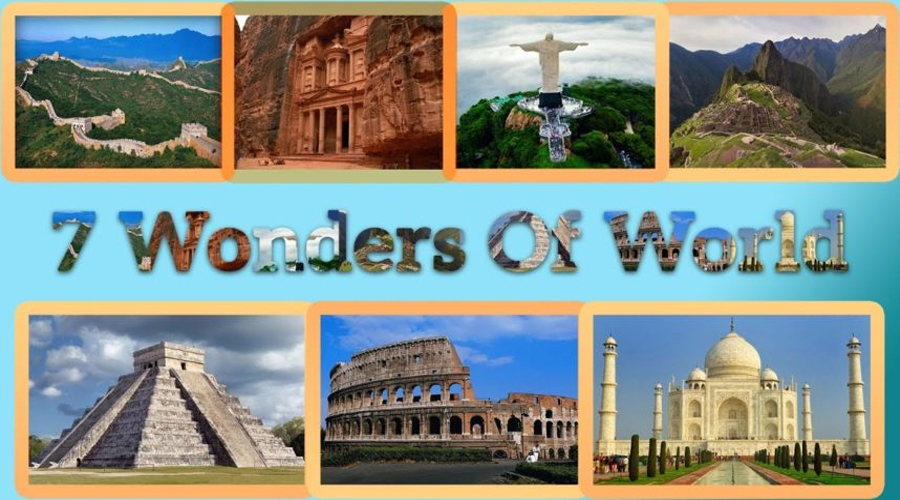New 7 Wonders of The World


Wild Animals
August 2, 2019

Endangered Species
August 2, 2019
Written by: Devrat Agrawal
- New7Wonders of the World (2000–2007) was a campaign started in 2000 to choose Wonders of the World from a selection of 200 existing monuments.
- The popularity poll was led by Canadian-Swiss Bernard Weber and organized by the New7Wonders Foundation based in Zurich, Switzerland, with winners announced on 7 July 2007 in Lisbon.
- The New7Wonders Foundation said that more than 100 million votes were cast through the Internet or by telephone.
Some examples are:
| New 7 Wonders of the World | Basic Information |
|---|---|
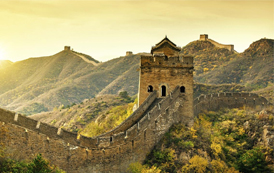  |
1. The Great Wall of China is the collective name of a series of fortification systems generally built across the historical northern borders of China to protect and consolidate territories of Chinese states and empiresagainst various nomadic groups of the steppe and their polities. 2. Several walls were being built from as early as the 7th century BC by ancient Chinese states. 3. Apart from defense, other purposes of the Great Wall have included border controls, allowing the imposition of duties on goods transported along the Silk Road, regulation or encouragement of trade and the control of immigration and emigration. 4. This is made up of 6,259 km sections of actual wall, 359 km of trenches and 2,232 km of natural defensive barriers such as hills and rivers. 5. Today, the defensive system of Great Wall is generally recognized as one of the most impressive architectural feats in history. |
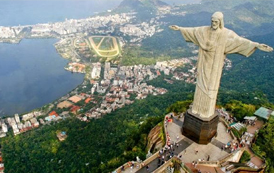  |
1. It is an Art Deco statue of Jesus Christ in Rio de Janeiro, Brazil. 2. It was constructed between 1922 and 1931. 3. The statue is 30m high excluding 8 m high pedestal. 4. The arms stretch 28m wide. 5. Itis located at the peak of the 700m Corcovadomountain in the Tijuca Forest National Park overlooking the city of Rio de Janeiro. |
  |
1. Machu Picchu is a 15th century Inca citadel, located in the Eastern Cordillera of southern Peru, on a 2,430-metre (7,970 ft) mountain ridge. 2. Most archaeologists believe that Machu Picchu was constructed as an estate for the Inca emperor Pachacuti (1438–1472). 3. Often mistakenly referred to as the “Lost City of the Incas,” it is the most familiar icon of Inca civilization. 4. Machu Picchu was built in the classical Inca style, with polished dry-stone walls. 5. Its three primary structures are the Intihuatana, the Temple of the Sun, and the Room of the Three Windows. |
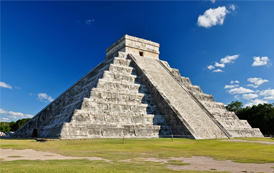  |
1. Chichen Itza was a large pre-Columbian city built by the Maya people of the Terminal Classic period. 2. The archaeological site is located in Tinúm Municipality, Yucatán State, Mexico. 3. The site exhibits a multitude of architectural styles, reminiscent of styles seen in central Mexico and of the Puuc and Chenes styles of the Northern Maya lowlands. 4. Chichen Itza was one of the largest Maya cities and it was likely to have been one of the mythical great cities. 5. Chichen Itza is one of the most visited archaeological sites in Mexico with over 2.6 million tourists in 2017. |
  |
1. It is an oval amphitheatre (open-air venue) in the centre of city of Rome, Italy. 2. It is also known as the Flavian Amphitheatre, the greatest amphitheatre ever built. 3. Although partially ruined due to earthquakes and stone robbers, it is still an iconic symbol of Imperial Rome. 4. It can hold between 50,000 and 80,000 spectators. 5. In 2018, it was most visited place with 7.4 million visitors. |
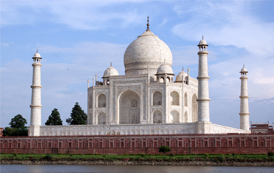  |
1. The Taj Mahal meaning “Crown of the Palaces” is an ivory-white marble mausoleum on the south bank of the Yamuna river in the Indian city of Agra. 2. It was commissioned in 1632 by the Mughal emperor, Shah Jahan, to house the tomb of his favourite wife, Mumtaz Mahal. 3. It also houses the tomb of Shah Jahan, the builder. 4. The tomb is the centerpiece of a 17-hectare complex, which includes a mosque and a guest house, and is set in formal gardens bounded on three sides by a crenellated wall. 5. The Taj Mahal complex is believed to have been completed in its entirety in 1653 at a cost estimated at the time to be around 32 million rupees.It is regarded by many as the best example of Mughal architecture and a symbol of India’s rich history. |
  |
1. Originally known to its inhabitants as Raqmu, is a historical and archaeological city in southern Jordan. 2. Petra lies on the slope of Jabal Al-Madbah in a basin among the mountains which form the eastern flank of the Arabah valley that runs from the Dead Sea to the Gulf of Aqaba. 3. Petra is believed to have been settled as early as 9,000 BC, and it was possibly established in the 4th century BC as the capital city of the Nabataean Kingdom. 4. The trading business gained the Nabataeans considerable revenue and Petra became the focus of their wealth. 5. The earliest historical reference to Petra was an unsuccessful attack to the city ordered by Antigonus I in 312 BC recorded by various Greek historians. |




